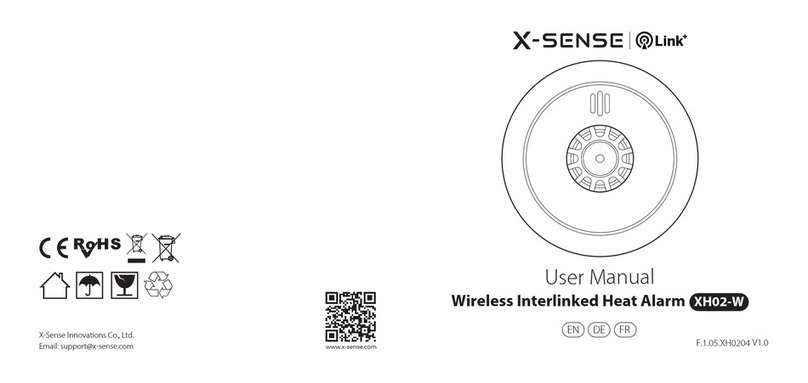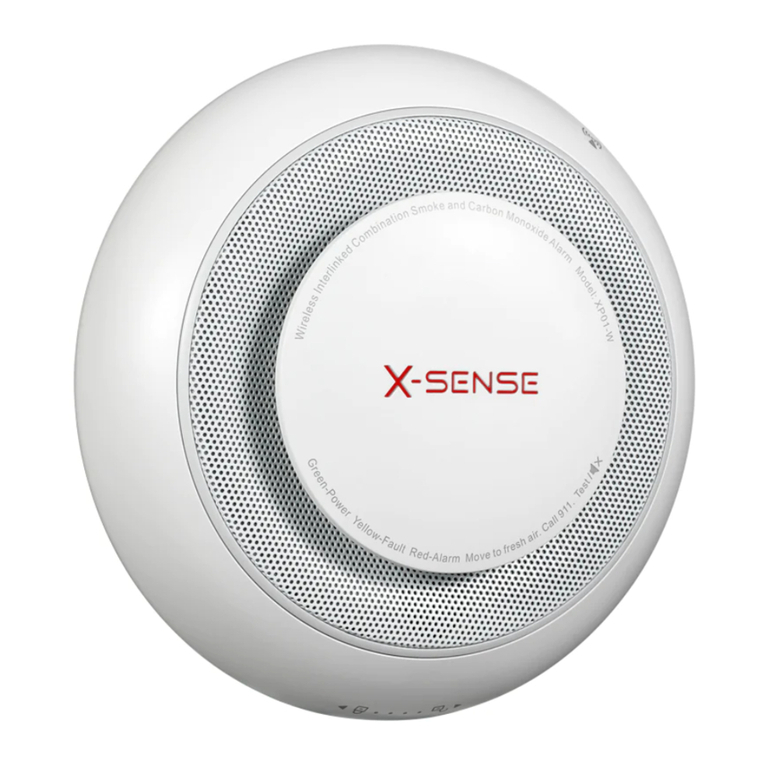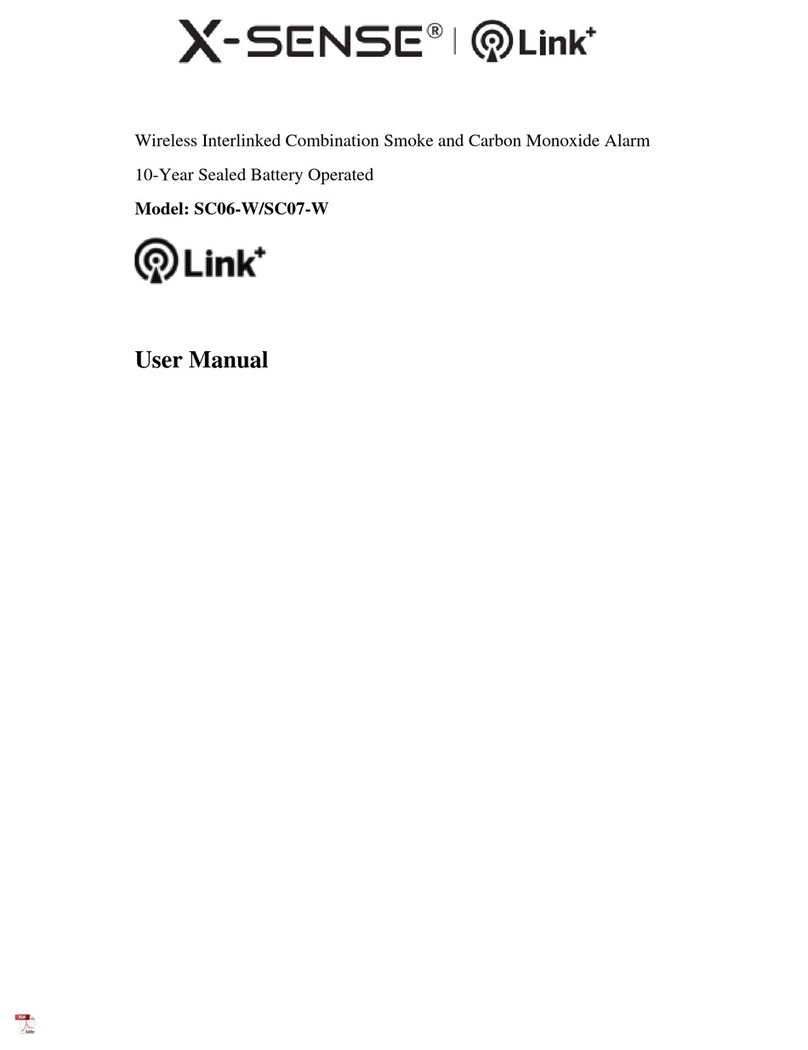
14 15
Technische Daten
Energiequelle 3 LR6 AA 1.5 V
Sensortyp elektrochemisch
Gastyp der erkannt wird Kohlenmonoxid
Alarmauslösung
30 to 49 ppm (120 Minuten)
50 to 99 ppm (60 bis 90 Minuten)
100 to 299 ppm (10 bis 40 Minuten)
über 300 ppm (0 bis 180 Sekunden)
Betriebstemperatur -10℃to +40℃
Umgebungsfeuchtigkeit 15% to 90%
Horn Level 85 dB bei 1 m (3,3 Fuß)
Produktabmessungen 127 mm x 75 mm x 35 mm
Produktlebensdauer 3 Jahre
Geeignete Anbringung
1. Der Kohlenmonoxid (CO)-Melder sollte außerhalb jedes Schlafbereichs, in un-
mittelbarer Nähe zum Schlafzimmer, angebracht werden. Um den effektivsten
Nutzen des CO-Melders zu gewährleisten, sollte er mindestens 1,5m (5 Fuß)
über dem Boden platziert werden. Von der Decke sollte er mindestens 15cm
(6 Zoll) entfernt sein und 30cm (12 Zoll) von jeglichen angrenzenden Wänden.
Stellen Sie sicher, dass es zwischen dem Melder und möglichen CO-Quellen (z.B.
Gasboiler oder gasbetriebene Heizanlagen) keine Hindernisse gibt.
2. Für den besten Schutz sollte ein Kohlenmonoxidmelder, neben den unten auf-
gelisteten Ausnahmeräumen, in jedem Raum und Flur Ihres Hauses installiert
werden.
3. Installieren Sie Kohlenmonoxidmelder nicht in der Nähe von Ventilatoren, Fen-
stern, etc., die das CO vom Melder abziehen können.
4. Installieren Sie den Melder nicht in sehr feuchten Umgebungen, wie zum
Beispiel Badezimmern oder in Räumlichkeiten, in denen sich leicht Staub und
Schmutz bilden, die den Sensor behindern können.
5. Installieren Sie den Melder nicht in der Nähe von Deckendekorationen, welche
die Verbreitung von CO behindern könnten, oder an Orten, an denen der Mel-
der einfach zu berühren, entfernen und zu beschädigen ist.
Installation
Dieser CO-Melder ist batteriebetrieben und benötigt keine zusätzliche Verkabe-
lung. Er kann entweder an einer Wand, mit den beigelegten Hilfsmitteln, oder auf
einer Tischplatte platziert werden.
Wandanbringung
WICHTIG: Stellen Sie vor einer Bohrung sicher, dass sich hinter oder in
unmittelbarer Nähe der gewählten Befestigungsstelle, keine elektrischen
Kabel oder Rohre benden.
1. Verwenden Sie die Befestigungsplatte als Hilfsmittel und markieren Sie die
Stellen der beiden Befestigungslöcher.
2. Bohren Sie Löcher in die markierten Stellen.






























